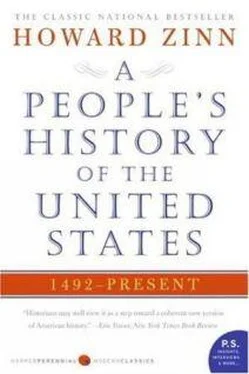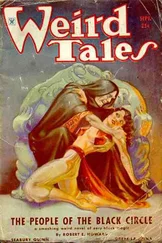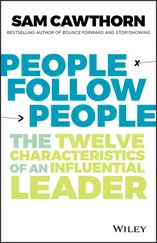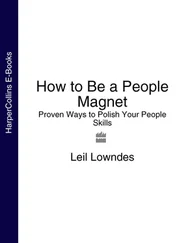Howard Zinn - A People
Здесь есть возможность читать онлайн «Howard Zinn - A People» весь текст электронной книги совершенно бесплатно (целиком полную версию без сокращений). В некоторых случаях можно слушать аудио, скачать через торрент в формате fb2 и присутствует краткое содержание. Издательство: Harper-Collins, Жанр: Фэнтези, на английском языке. Описание произведения, (предисловие) а так же отзывы посетителей доступны на портале библиотеки ЛибКат.
- Название:A People
- Автор:
- Издательство:Harper-Collins
- Жанр:
- Год:неизвестен
- ISBN:нет данных
- Рейтинг книги:4 / 5. Голосов: 1
-
Избранное:Добавить в избранное
- Отзывы:
-
Ваша оценка:
- 80
- 1
- 2
- 3
- 4
- 5
A People: краткое содержание, описание и аннотация
Предлагаем к чтению аннотацию, описание, краткое содержание или предисловие (зависит от того, что написал сам автор книги «A People»). Если вы не нашли необходимую информацию о книге — напишите в комментариях, мы постараемся отыскать её.
A People — читать онлайн бесплатно полную книгу (весь текст) целиком
Ниже представлен текст книги, разбитый по страницам. Система сохранения места последней прочитанной страницы, позволяет с удобством читать онлайн бесплатно книгу «A People», без необходимости каждый раз заново искать на чём Вы остановились. Поставьте закладку, и сможете в любой момент перейти на страницу, на которой закончили чтение.
Интервал:
Закладка:
Smith's conclusion is supported by a more recent study of servants in seventeenth-century Maryland, where it was found that the first batches of servants became landowners and politically active in the colony, but by the second half of the century more than half the servants, even after ten years of freedom, remained landless. Servants became tenants, providing cheap labor for the large planters both during and after their servitude.
It seems quite clear that class lines hardened through the colonial period; the distinction between rich and poor became sharper. By 1700 there were fifty rich families in Virginia, with wealth equivalent to 50,000 pounds (a huge sum those days), who lived off the labor of black slaves and white servants, owned the plantations, sat on the governor's council, served as local magistrates. In Maryland, the settlers were ruled by a proprietor whose right of total control over the colony had been granted by the English King. Between 1650 and 1689 there were five revolts against the proprietor.
In the Carolinas, the Fundamental Constitutions were written in the 1660s by John Locke, who is often considered the philosophical father of the Founding Fathers and the American system. Locke's constitution set up a feudal-type aristocracy, in which eight barons would own 40 percent of the colony's land, and only a baron could be governor. When the crown took direct control of North Carolina, after a rebellion against the land arrangements, rich speculators seized half a million acres for themselves, monopolizing the good farming land near the coast Poor people, desperate for land, squatted on bits of farmland and fought all through the pre-Revolutionary period against the landlords' attempts to collect rent.
Carl Bridenbaugh's study of colonial cities, Cities in the Wilderness , reveals a clear-cut class system. He finds:
The leaders of early Boston were gentlemen of considerable wealth who, in association with the clergy, eagerly sought to preserve in America the social arrangements of the Mother Country. By means of their control of trade and commerce, by their political domination of the inhabitants through church and Town Meeting, and by careful marriage alliances among themselves, members of this little oligarchy laid the foundations for an aristocratic class in seventeenth century Boston.
At the very start of the Massachusetts Bay Colony in 1630, the governor, John Winthrop, had declared the philosophy of the rulers: "… in all times some must be rich, some poore, some highe and eminent in power and dignitie; others meane and in subjection."
Rich merchants erected mansions; persons "of Qualitie" traveled in coaches or sedan chairs, had their portraits painted, wore periwigs, and filled themselves with rich food and Madeira. A petition came from the town of Deer-field in 1678 to the Massachusetts General Court: "You may be pleased to know that the very principle and best of the land; the best for soile; the best for situation; as laying in ye center and midle of the town: and as to quantity, nere half, belongs unto eight or nine proprietors…"
In Newport, Rhode Island, Bridenbaugh found, as in Boston, that "the town meetings, while ostensibly democratic, were in reality controlled year after year by the same group of merchant aristocrats, who secured most of the important offices…" A contemporary described the Newport merchants as "… men in flaming scarlet coats and waistcoats, laced and fringed with brightest glaring yellow. The Sly Quakers, not venturing on these charming coats and waistcoats, yet loving finery, figured away with plate on their sideboards."
The New York aristocracy was the most ostentatious of all, Bridenbaugh tells of "window hangings of camlet, japanned tables, gold-framed looking glasses, spinets and massive eight-day clocks… richly carved furniture, jewels and silverplate… Black house servants."
New York in the colonial period was like a feudal kingdom. The Dutch had set up a patroonship system along the Hudson River, with enormous landed estates, where the barons controlled completely the lives of their tenants, in 1689, many of the grievances of the poor were mixed up in the farmers' revolt of Jacob Leisler and his group. Leisler was hanged, and the parceling out of huge estates continued. Under Governor Benjamin Fletcher, three-fourths of the land in New York was granted to about thirty people. He gave a friend a half million acres for a token annual payment of 30 shillings. Under Lord Cornbury in the early 1700s, one grant to a group of speculators was for 2 million acres.
In 1700, New York City church wardens had asked for funds from the common council because "the Crys of the poor and Impotent for want of Relief are Extreamly Grevious." In the 1730s, demand began to grow for institutions to contain the "many Beggarly people daily suffered to wander about the Streets." A city council resolution read:
Whereas the Necessity, Number and Continual Increase of the Poor within this City is very Great and… frequendy Commit divers misdemeanors within the Said City, who living Idly and unemployed, become debauched and Instructed in the Practice of Thievery and Debauchery. For Remedy Whereof… Resolved that there be forthwith built… A good, Strong and Convenient House and Tenement.
The two-story brick structure was called "Poor House, Work House, and House of Correction."
A letter to Peter Zenger's New York Journal in 1737 described the poor street urchin of New York as "an Object in Human Shape, half starv'd with Cold, with Cloathes out at the Elbows, Knees through the Breeches, Hair standing on end… From the age about four to Fourteen they spend their Days in the Streets… then they are put out as Apprentices, perhaps four, five, or six years…"
The colonies grew fast in the 1700s. English settlers were joined by Scotch-Irish and German immigrants. Black slaves were pouring in; they were 8 percent of the population in 1690; 21 percent in 1770. The population of the colonies was 250,000 in 1700; 1,600,000 by 1760. Agriculture was growing. Small manufacturing was developing. Shipping and trading were expanding. The big cities- Boston, New York, Philadelphia, Charleston — were doubling and tripling in size.
Through all that growth, the upper class was getting most of the benefits and monopolized political power. A historian who studied Boston tax lists in 1687 and 1771 found that in 1687 there were, out of a population of six thousand, about one thousand property owners, and that the top 5 percent- 1 percent of the population-consisted of fifty rich individuals who had 25 percent of the wealth. By 1770, the top 1 percent of property owners owned 44 percent of the wealth.
As Boston grew, from 1687 to 1770, the percentage of adult males who were poor, perhaps rented a room, or slept in the back of a tavern, owned no property, doubled from 14 percent of the adult males to 29 percent. And loss of property meant loss of voting rights.
Everywhere the poor were struggling to stay alive, simply to keep from freezing in cold weather. All the cities built poorhouses in the 1730s, not just for old people, widows, crippled, and orphans, but for unemployed, war veterans, new immigrants. In New York, at midcentury, the city almshouse, built for one hundred poor, was housing over four hundred. A Philadelphia citizen wrote in 1748: "It is remarkable what an increase of the number of Beggars there is about this town this winter." In 1757, Boston officials spoke of "a great Number of Poor… who can scarcely procure from day to day daily Bread for themselves amp; Families."
Kenneth Lockridge, in a study of colonial New England, found that vagabonds and paupers kept increasing and "the wandering poor" were a distinct fact of New England life in the middle 1700s. James T. Lemon and Gary Nash found a similar concentration of wealth, a widening of the gap between rich and poor, in their study of Chester County, Pennsylvania, in the 1700s.
Читать дальшеИнтервал:
Закладка:
Похожие книги на «A People»
Представляем Вашему вниманию похожие книги на «A People» списком для выбора. Мы отобрали схожую по названию и смыслу литературу в надежде предоставить читателям больше вариантов отыскать новые, интересные, ещё непрочитанные произведения.
Обсуждение, отзывы о книге «A People» и просто собственные мнения читателей. Оставьте ваши комментарии, напишите, что Вы думаете о произведении, его смысле или главных героях. Укажите что конкретно понравилось, а что нет, и почему Вы так считаете.












